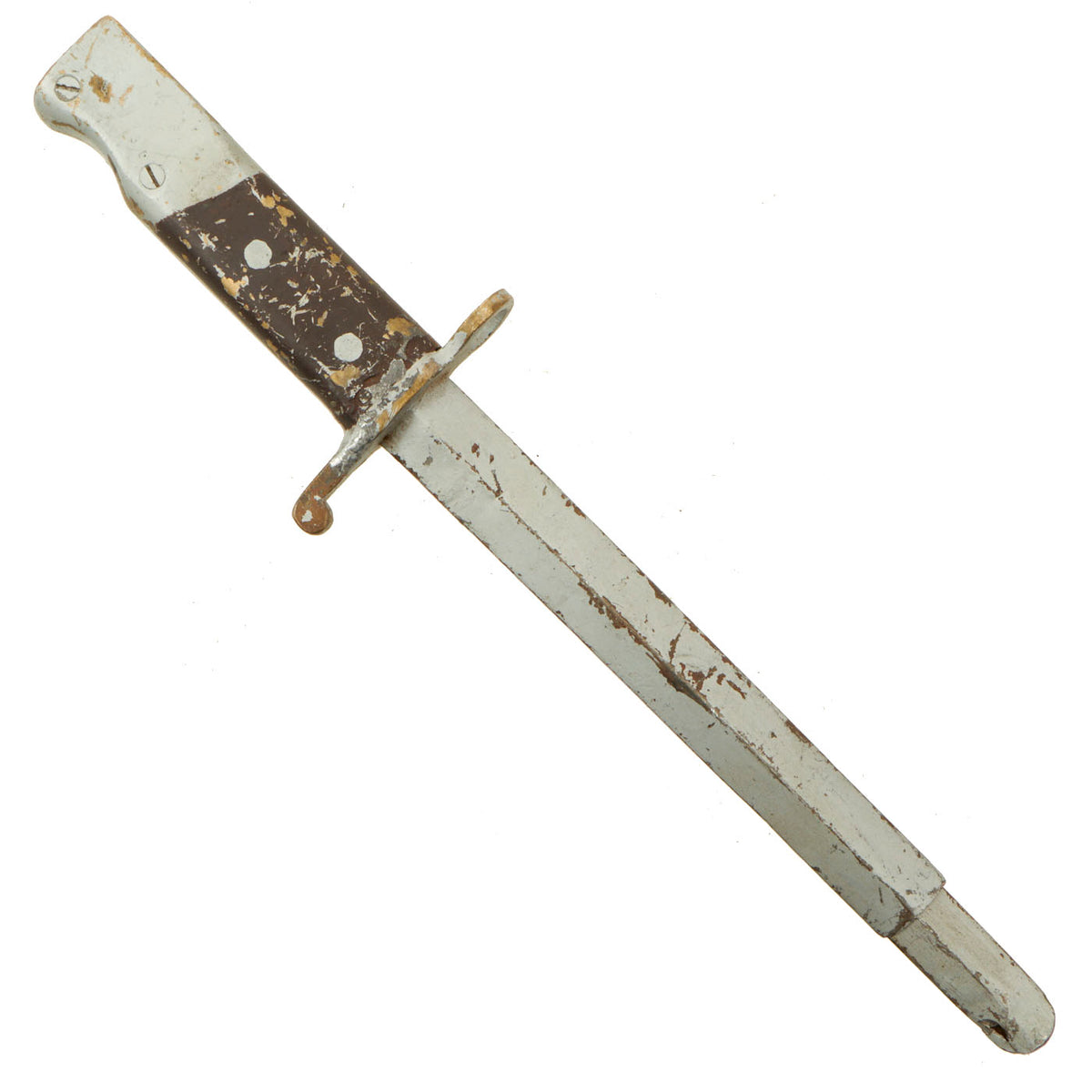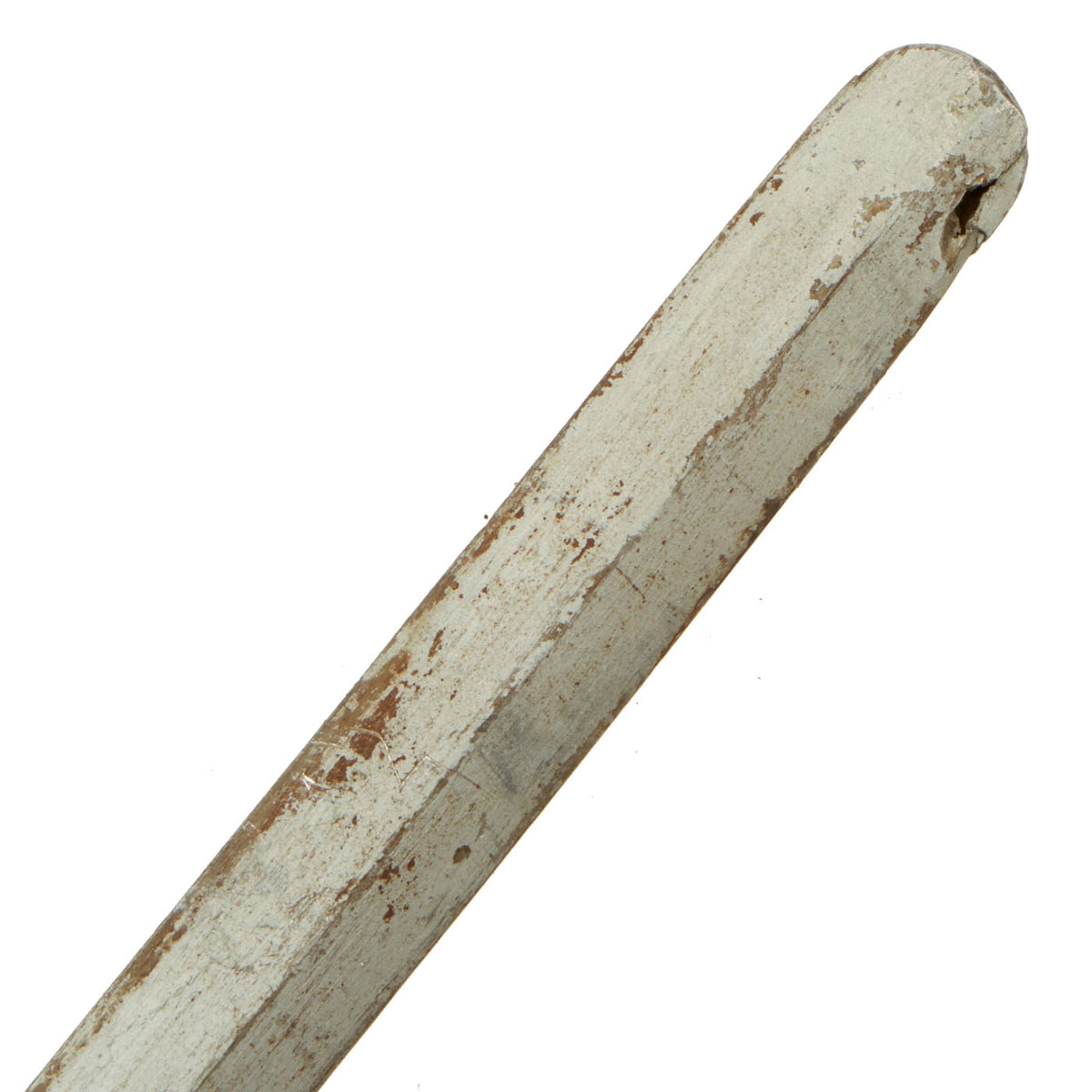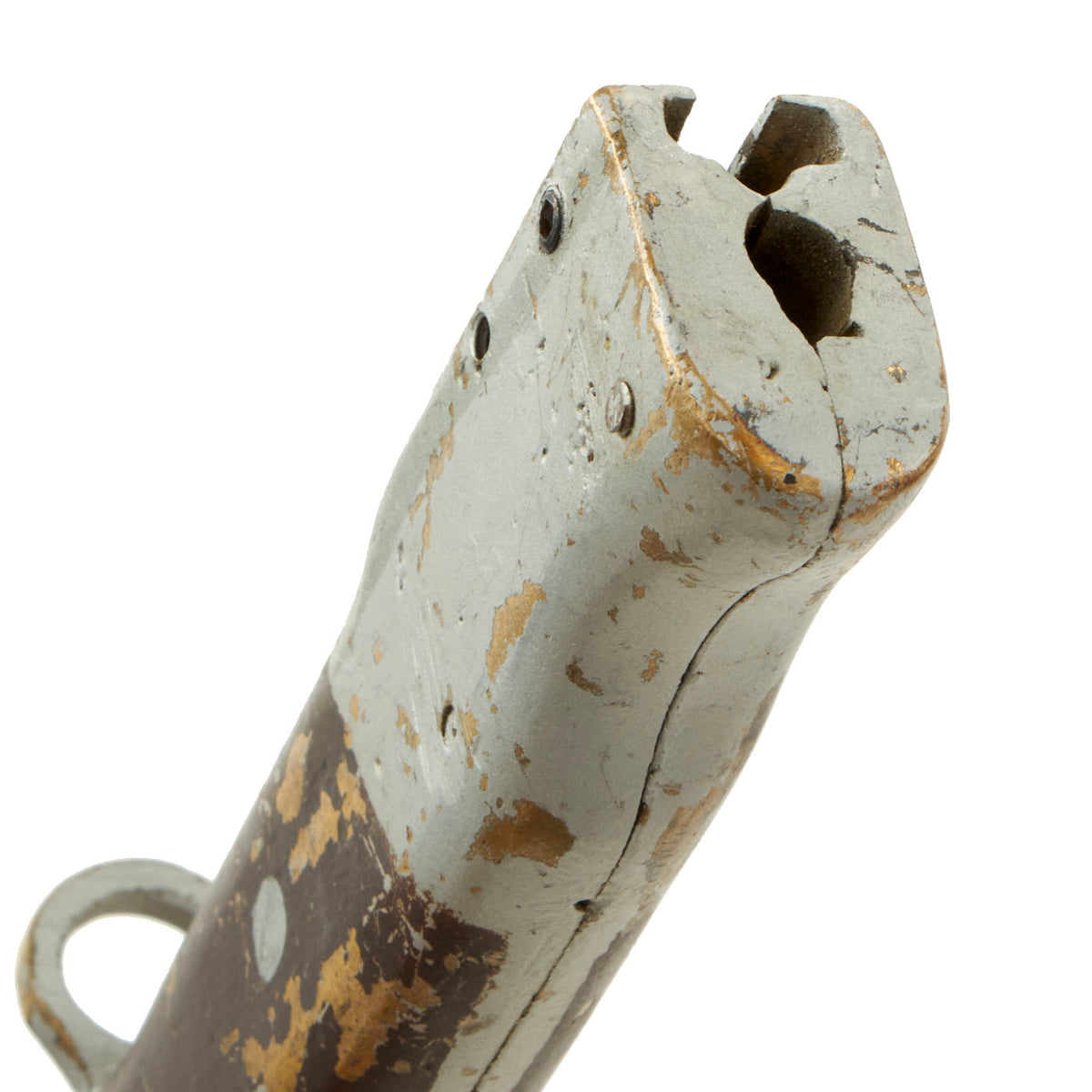Original Film Prop British 1903 Pattern Bayonet With Spring Retractable Tip – Ellis Props and Graphics Original Items
$ 225,00 $ 90,00
Original Item: Only One Available. Now this is an interesting piece. We believe it to be modeled after the British 1903 Pattern Bayonet for the Mk1 III Short Magazine Lee Enfield (SMLE) rifle.
The vast Ellis collection was acquired beginning in 1908, when a pawn shop, Ellis Mercantile, began renting merchandise to early filmmakers. According to Ellis Props, it began when a studio employee wanted to buy a glass eye. The pawn shop decided to rent it in case the owner returned, and it continued the practice with other items.
This prop was acquired from the Ellis Props and Graphics liquidation auction. Ellis was the oldest and largest Prop House in California until its liquidation auctions in late 1999 and early 2000. The original Ellis Auction label is unfortunately no longer present on this prop.
The bayonet is constructed of a thin steel two piece blade with an inner spring. The point is designed to retract into the lower portion of the blade when it meets resistance and when pulled away it shoots back out, looking like you stabbed into the object. The crossguard and grip are all made of what appears to be brass.
The overall condition is good. All pieces appear to be present and complete. There is some surface wear and it does show signs of being used. The paint has retained nicely, but there are areas where bare metal shows through. The retracting spring is still present and seems to function properly.
We are not sure what movie this was used in, or even if it was used at all. It’s definitely an interesting piece in lovely condition for what it is. Comes ready to display in your military movie prop collections!
The Pattern 1903 bayonet was introduced in conjunction with the Short, Magazine Lee Enfield Rifle. It was essentially a version of the existing Pattern 1888 bayonet redesigned to conform with the new rifle. It was not long before concerns arose about the overall length of the SMLE and its bayonet. It was feared that British troops might be at a disadvantage in bayonet combat with enemies equipped with longer weapons. As a result the Pattern 1907 bayonet was designed and introduced. However, the Pattern 1903 remained in service in the Indian Army until the First World War.
Fast Shipping with Professional Packaging
Thanks to our longstanding association with UPS FedEx DHL, and other major international carriers, we are able to provide a range of shipping options. Our warehouse staff is expertly trained and will wrap your products according to our exact and precise specifications. Prior to shipping, your goods will be thoroughly examined and securely secured. We ship to thousands clients each day across multiple countries. This shows how we're dedicated to be the largest retailer on the internet. Warehouses and distribution centres can be located throughout Europe as well as the USA.
Note: Orders with more than one item will be assigned a processing date depending on the item.
Before shipping before shipping, we'll conduct a thorough inspection of the items you have ordered. Today, the majority of orders will be delivered within 48 hours. The delivery time will be between 3-7 days.
Returns
The stock is dynamic and we cannot completely manage it because multiple stakeholders are involved, including our factory and warehouse. So the actual stock may alter at any time. It's possible that you may not receive your order once the order has been made.
Our policy is valid for a period of 30 days. If you don't receive the product within 30 days, we are not able to issue a refund or an exchange.
You can only return an item if it is unused and in the same state as the day you received it. You must have the item in its original packaging.
Related products
Uncategorized
Uncategorized
Uncategorized
Armored Burgonet Helmet & Polearm from Scottish Castle Leith Hall Circa 1700 Original Items
Uncategorized
Uncategorized
Uncategorized
Uncategorized
Uncategorized
Uncategorized
Australian WWII Owen MK1 Machine Carbine SMG Custom Fabricated Replica with Sling Original Items
Uncategorized
Band of Brothers ORIGINAL GERMAN WWII Le. F.H. 18 10.5cm ARTILLERY PIECE Original Items
Uncategorized
Uncategorized
Uncategorized
Armoured Fighting Vehicles of the World: AFVs of World War One (Hardcover Book) New Made Items
Uncategorized
Uncategorized
Uncategorized












































































